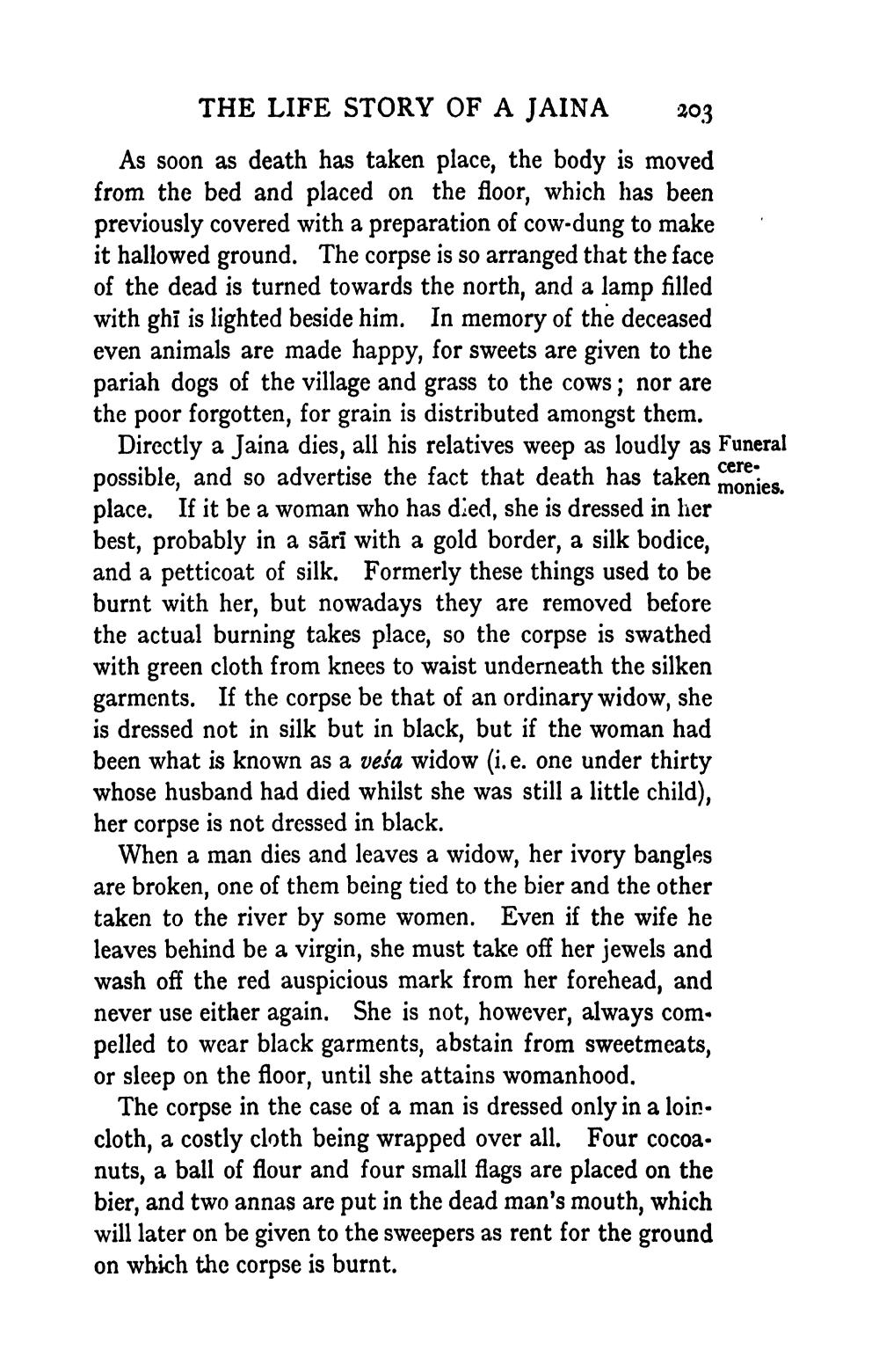________________
THE LIFE STORY OF A JAINA
203
As soon as death has taken place, the body is moved from the bed and placed on the floor, which has been previously covered with a preparation of cow-dung to make it hallowed ground. The corpse is so arranged that the face of the dead is turned towards the north, and a lamp filled with ghi is lighted beside him. In memory of the deceased even animals are made happy, for sweets are given to the pariah dogs of the village and grass to the cows; nor are the poor forgotten, for grain is distributed amongst them.
cere.
Directly a Jaina dies, all his relatives weep as loudly as Funeral possible, and so advertise the fact that death has taken monies. place. If it be a woman who has died, she is dressed in her best, probably in a sārī with a gold border, a silk bodice, and a petticoat of silk. Formerly these things used to be burnt with her, but nowadays they are removed before the actual burning takes place, so the corpse is swathed with green cloth from knees to waist underneath the silken garments. If the corpse be that of an ordinary widow, she is dressed not in silk but in black, but if the woman had been what is known as a veśa widow (i. e. one under thirty whose husband had died whilst she was still a little child), her corpse is not dressed in black.
When a man dies and leaves a widow, her ivory bangles are broken, one of them being tied to the bier and the other taken to the river by some women. Even if the wife he leaves behind be a virgin, she must take off her jewels and wash off the red auspicious mark from her forehead, and never use either again. She is not, however, always com. pelled to wear black garments, abstain from sweetmeats, or sleep on the floor, until she attains womanhood.
The corpse in the case of a man is dressed only in a loin. cloth, a costly cloth being wrapped over all. Four cocoanuts, a ball of flour and four small flags are placed on the bier, and two annas are put in the dead man's mouth, which will later on be given to the sweepers as rent for the ground on which the corpse is burnt.




